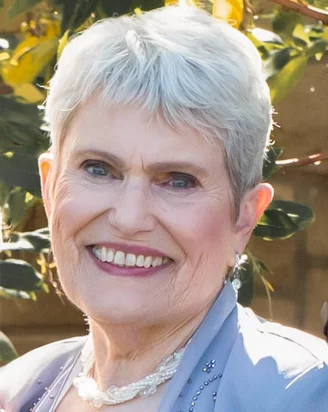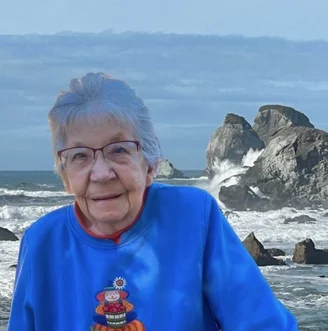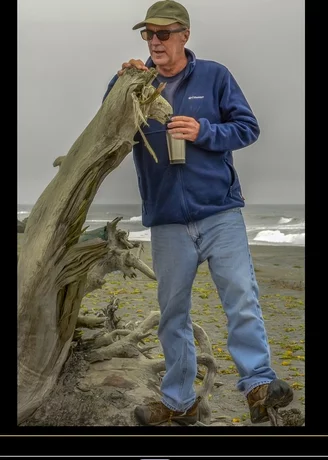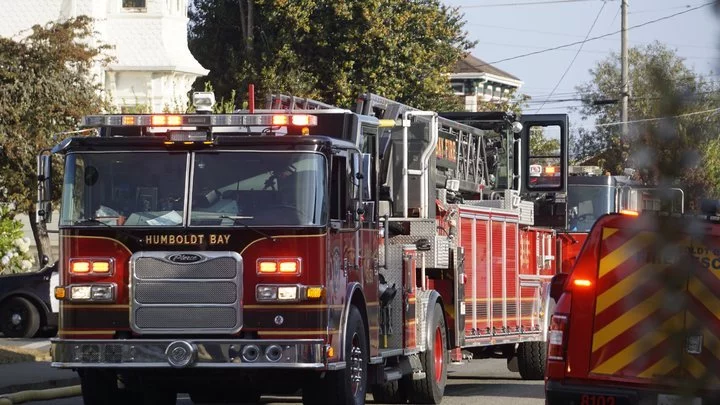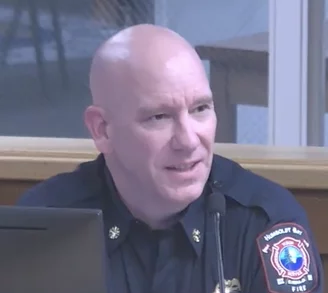California Is Investigating OpenAI’s Conversion to a For-Profit Company
Khari Johnson / Thursday, Jan. 23, 2025 @ 7:35 a.m. / Sacramento
Attorney General Rob Bonta has asked OpenAI about its reported conversion to a for-profit company as part of an ongoing investigation. Bonta during a press conference in Sacramento on Sept. 26, 2023. Photo by Miguel Gutierrez Jr., CalMatters
As part of what it described as an ongoing investigation, the California attorney general’s office has sought answers from OpenAI about its reported plan to convert to a for-profit corporation and how it intends to transfer assets out of its existing nonprofit.
In a letter sent to the ChatGPT maker Dec. 6, deputy attorney general Christopher Lamerdin cited clauses in OpenAI’s articles of incorporation under which “OpenAI’s assets are irrevocably dedicated to its charitable purpose,” as Lamerdin put it, as well as the office’s “responsibility to protect assets held in charitable trust.” In addition to asking about asset transfers, it sought information on OpenAI’s restructuring plan and the value of its assets.
The attorney’s general’s office told CalMatters in an email, “The Department of Justice is committed to protecting charitable assets for their intended purpose and takes this responsibility seriously.”
The letter asked for a response from OpenAI by Jan. 8. Asked if the attorney general received such a response, a spokesperson wrote, “To protect its integrity, we’re unable to comment on an ongoing investigation.”
The Department of Justice is committed to protecting charitable assets for their intended purpose and takes this responsibility seriously.
—Office of Attorney General Rob Bonta
OpenAI did not answer questions on the record about the letter or its structure as an organization.
Allowing nonprofit OpenAI to repurpose its assets to earn a profit and attract investors could set a dangerous precedent, critics argue, allowing startups to enjoy the tax writeoffs of nonprofits even when they intend to eventually become highly lucrative, capitalist enterprises.
The debate over OpenAI’s business restructure comes at a time when the company is attempting to grow its influence. OpenAI increased spending on lobbying Congress sevenfold last year, and for the first time hired lobbyists to oppose bills to regulate AI in Sacramento.
In September, Reuters reported that OpenAI would move control of its core business from its nonprofit to a for-profit public benefit corporation. In November, Bloomberg reported that OpenAI was in talks with California’s attorney general over the shift.
The company confirmed at the end of December that it was considering a new structure and planned to set up a for-profit public benefit corporation, although it stopped short of saying it planned to move control into the for-profit entity.
OpenAI was founded in late 2015 with the backing of “PayPal Mafia” members like LinkedIn co-founder Reid Hoffman and Tesla CEO Elon Musk. Originally a nonprofit focused on benefiting humanity through research into artificial general intelligence, it created four years later a for-profit arm to appear more attractive to investors and pour billions of dollars into computing resources in order to train powerful AI systems. Profits flowing to that part of the company and its investors are understood to be capped, creating a barrier to fundraising. A dispute between the nonprofit and for-profit arms of OpenAI broke into the open in late 2023 following an effort by the nonprofit board to oust co-founder and CEO Sam Altman, which led to an ultimatum from a majority of employees, who threatened to quit if Altman was not reinstated.
Since then, OpenAI closed a $6.6 billion funding round and, earlier this week, alongside President Trump in the White House, announced the Stargate Project, a $500 billion joint venture to build data centers and energy infrastructure that companies like OpenAI say is necessary to train large AI models.
California’s attorney general, Rob Bonta, on Dec. 12 was urged in a letter from Meta to stop OpenAI from becoming a for-profit company, according to the Wall Street Journal, with Meta arguing that such a precedent could have “seismic implications for Silicon Valley” by allowing startups to enjoy privileged nonprofit tax status until they begin making money. Musk has sought to block the conversion as part of a lawsuit against OpenAI filed last summer.
After the OpenAI nonprofit board fired Altman in 2023, nonprofit consumer advocacy group Public Citizen repeatedly argued in letters to attorneys general in California, where OpenAI is based, and Delaware, where OpenAI filed articles of incorporation, that they should investigate the organization. Public Citizen Co-President Robert Weissman wrote that OpenAI was not operating like a nonprofit, should lose its nonprofit status and be forced to operate as a for-profit business, and that any for-profit entity assuming control of OpenAI should pay a premium for that control to a nonprofit entirely separate from OpenAI.
The precedent for this approach comes from Blue Cross of California, which, following a transfer of assets to a for-profit subsidiary in the 1990s, gave more than $3 billion in stock to two foundations.
It’s tough to say precisely how much such a premium is worth when it comes to OpenAI, but a day before OpenAI’s $6 billion funding round last October, Weissman estimated it’s worth at least $30 billion.
The Stargate Project, Weissman told CalMatters, “is more evidence that the OpenAI nonprofit doesn’t really exist as an independent body, that the OpenAI nonprofit board is not exerting any meaningful authority over the for profit, and isn’t even taking seriously its nonprofit mission.”
Weissman wants to see the attorney general investigate how much of a premium a for-profit OpenAI would need to pay and how that valuation relates to intellectual property owned by OpenAI and companies and subsidiaries tied to OpenAI.
“The California attorney general’s office is a serious regulator of nonprofits, and there’s no way that this scale spin off from a nonprofit is going to take place without careful review by the California attorney general,” Weissman told CalMatters. “We’re hopeful they arrive at conclusions that track [with] what we’ve been arguing over the last year and a half.”
###
Levi Sumagaysay contributed to this story.
CalMatters.org is a nonprofit, nonpartisan media venture explaining California policies and politics.
BOOKED
Today: 5 felonies, 11 misdemeanors, 0 infractions
JUDGED
Humboldt County Superior Court Calendar: Friday, Jan. 2
CHP REPORTS
Us101 S (HM office): Traffic Hazard
150 Nelson Ln (HM office): Traffic Hazard
1600 Mm36 E Hum 16.00 (HM office): Closure of a Road
9731 Mm101 N Men 97.30 (HM office): Trfc Collision-No Inj
Ryan Creek Rd / US101 (HM office): Traffic Hazard
ELSEWHERE
RHBB: Highway 36 Closed Again at Grizzly Bluff Slides After Boulder Hits Vehicle
RHBB: City of Trinidad Urges Residents to Boil Water After Repairing Water Main Leak
OBITUARY: Naomi Jade (Kiqiwh) Van Pelt, 1993-2025
LoCO Staff / Thursday, Jan. 23, 2025 @ 6:56 a.m. / Obits
Naomi
Jade (Kiqiwh) Van Pelt
July
17, 1993 – January 14, 2025
Naomi Jade (Kiqiwh) Van Pelt illuminated the world on Saturday, July 17, 1993. She was born to Dwight Van Pelt and Sandra Hostler in Eureka. Naomi spent her formative years in Hoopa and graduated from Hoopa Valley High School in 2011. After high school, she pursued studies in biology at Butte College and Mendocino College before returning to her hometown in 2015.
Naomi worked as a medical insurance biller and fiscal clerk at her local medical clinic before transitioning to a role as a bank teller. On June 30, 2021, Naomi and Mawahche Blake welcomed their newborn son, Keehl Solair Blake, who filled their lives with curiosity and sweetness.
Naomi was a devoted and loving mother, always staying informed about child-rearing studies and parenting methods. She cherished reading to Keehl, cuddling him, exploring nature in search of bugs, and playing with dinosaurs. With a depth of character matched only by her brilliant mind, Naomi had a passion for reading that was truly inspirational; she spent countless hours immersed in books and online articles.
Her interests included video games, Pokémon, animals, technology, and spending time in nature or with friends and family. As a gentle spirit, Naomi loved her friends and family deeply, appreciating the natural beauty of the valley where she spent most of her life. Gifted with the ability to see the good in everyone, she was truly without prejudice. Naomi was admired for her beauty, her zest for life, and her gratitude for all the experiences that shaped her into the person we came to love and know.
Honorary Pallbearers:
Dwight Van Pelt Sr., Emmett Chase Sr., Tsewinaldin Van Pelt, Tsemeta Van Pelt, Mindich Van Pelt, Kikya Van Pelt, Tsenikyaw Van Pelt, Omar Dean V, Uncle Ivan, Keith Hostler Sr., Clarence Hostler Sr., Clarence Hostler Jr. (Bubado), Norvin (Jude) Hostler, Norvin Hostler, Nikwe Hostler, Brandon Scott, Mark Scott, Cooper Scott, Lawrence Tracy, Jason Peterson, Aaron Peterson, Craig Merrick, Nathaniel Sanderson, Mike Hostler, Loren Hostler Sr., Hunter Sanderson, Ben Sanderson, Roger Sanderson, Rick Sanderson, Robert Masten, Jayden Reed, Porty Blake, Cawtep Sylvia, Jake Blake, Grant McCovey, Peter Blake, Keenan O’Rourke, Keoki Burbank, Paul Donahue, Cesar Flores, Valin Davis, Joseph McCovey, Julian McCovey, Dusty Rhoades, and Dylon Malnourie.
Pallbearers:
Kaycam Van Pelt, Bud Hostler, Blake Hostler, Richard Sanderson Jr., Zach Masten, Mawahche Blake, Tahn Blake, and Mike Obie.
Services and Final Arrangements:
A memorial service will be held at the Hupa NF Building on January 24, 2025, at 1 p.m., followed by a burial ceremony at Hostler Field. Afterward, a reception will take place at the Hoopa Fire Hall, where we can continue to honor and celebrate Naomi’s life.
A Heartfelt Thank You:
The family would like to express their deepest gratitude for the overwhelming support, love, and comfort shown by the community, friends, and family during this incredibly difficult time. Your kindness has been a great source of strength, and we are forever grateful for each of you.
If you are considering sending flowers, the family kindly requests real flowers instead of plastic ones, to honor Naomi’s memory.
###
The obituary above was submitted on behalf of Naomi Van Pelt’s loved ones. The Lost Coast Outpost runs obituaries of Humboldt County residents at no charge. See guidelines here. Email news@lostcoastoutpost.com.
OBITUARY: Camille Marie Kopriva Regli, 1938-2025
LoCO Staff / Thursday, Jan. 23, 2025 @ 6:56 a.m. / Obits
Camille
Marie Kopriva Regli
July
18, 1938 - January 14, 2025
Camille Regli, a beloved mother, grandmother, friend, and artist, passed away peacefully at the age of 86 on January 14, 2025, in Fortuna. Surrounded by her loving family, Camille passed after a long battle with lung complications caused by Alpha-1 antitrypsin deficiency and a recent battle with multiple myeloma.
Born on July 18, 1938, in Bowbells, North Dakota, Camille was the oldest of five children, growing up during the transformative years of World War II. During the war the family moved to Key West, Florida where her father taught navigation in the navy. Her family’s journey took them across several states, finally settling in St. Maries, Idaho, where she completed high school. This is when Camille thought she’d create her own nickname that sounded “cool” and began to call herself Cami. She also enjoyed skiing in the Idaho winters and swimming in the warm summers. She worked for two years as a lifeguard at the St. Marie’s town pool.
Camille lived in six different states before turning 20, including North Dakota, Arizona, Florida, Montana, Idaho and California. Camille soon pursued her academic dreams at Humboldt State University and later at San Francisco State University, where she earned a bachelor’s degree in medical technology in 1960.
During the summer of 1958, while Camille was home in Fortuna, her roommate Pat Regli introduced Camille to her older brother Joe, her future husband, who had returned from serving in the Army in Germany. The couple married on September 17, 1960. Camille worked as a lab technician for St. Joseph Hospital until their first child was born, in 1961. Together, they raised five children on their family dairy farm, Seawood Jerseys, where she dedicated herself to motherhood, community involvement and feeding calves on the dairy.
One of Camille’s most difficult challenges came during the devastating flood of 1964, when both the dairy and the lower level of their home were submerged. With four young children under five years old, including an infant Bernadette, Camille always recalled a man in a “frog-suit” coming up in a boat to the window to rescue the children. Luckily, the children could be with local family and friends while she undertook the daunting task of cleaning up. The local nuns helped the family during this time by purchasing baby formula, donating funds to help repair the floor, furniture and other damages. Unfortunately, during the flood the family lost their prized dairy bull and several other animals.
Camille was an active participant in the Ferndale Booster Band, involved in P.E.O., a docent at the Ferndale Museum, a 4-H leader, and a chaperone for ski club trips, continuing to ski well into her 70s. Once Camille started painting she became very involved with the Humboldt County art community and was a member of several art organizations.
Camille discovered her passion for painting in 1975, taking classes at College of the Redwoods and co-founding the Ferndale Arts Cooperative in 1990. Her oil paintings, particularly showcasing the scenic beauty of the Ferndale Valley, won numerous awards and can be found in many homes throughout Humboldt County. A devoted community member, Camille managed the Fine Arts Building at the Humboldt County Fair for many years. She also traveled extensively, creating numerous paintings capturing her adventures with family and friends.
Camille cherished family gatherings and time spent with friends, including her beloved card groups. On any given day Camille could be seen cheering on her grandchildren at sporting events, FFA competitions and 4-H activities. Above all, as an active member of the Assumption Church, Camille loved our Lord and was a practicing Catholic. From daily mass to praying the rosary, her devout faith inspired her friends, children, and grandchildren.
Camille is preceded in death by her husband, Joseph Regli; her parents, Eugene and Dolores Kopriva; brother Jim Kopriva; sister Karel Perras; sister-in-law and brother-in-law Eileen & Wes Simpson; brothers-in-law Dick Cahill, Vance Caswell, Jimmy Regli; and in-laws Antone & Elizabeth Regli.
Camille is survived by her children: Michael (Sally) Regli, Jim (Susan) Regli, Rebecca (John) Leveille, Bernadette (John) Church, and Dennis (Denise) Regli.
She is also survived by her grandchildren: Sarah Jean Regli, Kaitlyn (Chris) Rye, Tyler (Taylor) Regli, Rachelle (Barrett) Moore, Dominic (Mary) Regli, Genevieve (Matthew) Ruby, Seth Regli, Gianna Regli, Renae (Reece) Oliver, Brian Leveille, Amanda (Colton) Brodt, Tanner Church, and Kayla Regli; great grandchildren: Blakely & Barrett Brodt, Isaac, Marcus, & Patrick Rye, Emilia Regli, Emerson Oliver, and Rosemary Moore, and many nieces and nephews. She is also survived by her sister Mary Caswell, brother Andy (Joanne) Kopriva, brother-in-law Phil (Harlean) Regli, sister-in-law Pat Cahill, and brother-in-law John (Sally) Regli.
All are invited to attend a Rosary on February 14 at 7 p.m. and funeral mass on Saturday, February 15 at 10 a.m. both at Assumption Church in Ferndale. A lunch reception and Celebration of Life will follow the funeral at the Ferndale Community Center.
In lieu of flowers, donations can be made to:
- Marian Sisters of Santa Rosa, P.O. Box 1297, Santa Rosa, CA 95402 for support of the Special Project interest: 1st Daughter House in Ferndale, California
- Assumption Catholic Church, P.O. Box 1097, Ferndale, CA 95536.
- Alpha-1 Foundation, 3300 Ponce de Leon Blvd., Coral Gables, Florida 33134 (link).
- St. Vincent de Paul: Redwoods Council, 35 W 3rd Street, Eureka, CA 95501
###
The obituary above was submitted on behalf of Camille Regli’s loved ones. The Lost Coast Outpost runs obituaries of Humboldt County residents at no charge. See guidelines here. Email news@lostcoastoutpost.com.
OBITUARY: Betty Jo Bussard, 1935-2025
LoCO Staff / Thursday, Jan. 23, 2025 @ 6:56 a.m. / Obits
In loving memory of Betty Jo Bussard
October 15, 1935 –
January 17, 2025
Betty passed away at home on January 17, 2025 at the age of 89. She was born to Marion and Tressie Ingle on October 15, 1935 in Minatare, Nebraska. She is preceded in death by her husband, Ralph Bussard, of 14 years, and her sisters Vivian Jensen and Lola Keefer.
Betty graduated from Pescadero High School as valedictorian of her class. She was a waitress for many years in Redding and Alturas before moving to Happy Camp and assisting Ralph in the meat department at Larry’s Market. She was active in the Lion’s Club, Booster Club, CB Club and Eastern Star. She then moved to Eureka in 1985, where she became a window design consultant for JC Penney. She received numerous customer service awards and perfect attendance recognition and retired in 2000. Except for a short time in Nampa, Idaho, she lived in Eureka until her death.
She loved going to Samoa beach and watching the ocean. She was president of the Reno Bowling League at Harbor Lanes for many years and later would go with her daughter to watch and cheer everyone on. Betty was an avid and competitive card player. She enjoyed her iPad games, watching the Gameshow Network and Hallmark movies.
Betty is survived by her children, Edward (Cindy) Aristo of Stanwood, Wash., Donald (Barbara) Aristo of Winnemucca, Nevada, Debra (Timothy) Richie of Eureka, Calif., Stephen (Rana’) Bussard of Yreka, Calif., Danny Bussard of Helotes, Texas, nine grandchildren, seven great-grandchildren, along with her brother Dale Ingle of Canby, Ore., sister Wanda Prickett of Nampa, ID and several nieces and nephews. Betty will be greatly missed by all.
Funeral services will be at Sanders Funeral Home, Eureka, on Saturday, January 25 at 9:30 a.m. with graveside services immediately following at Sunset Memorial Park. In lieu of flowers please donate to a charity of your choice in her name
###
The obituary above was submitted on behalf of Betty Bussard’s loved ones. The Lost Coast Outpost runs obituaries of Humboldt County residents at no charge. See guidelines here. Email news@lostcoastoutpost.com.
OBITUARY: Donald Allyn Wente Jr., 1957-2024
LoCO Staff / Thursday, Jan. 23, 2025 @ 6:56 a.m. / Obits
Donald Allyn Wente Jr.
Aug.
8, 1957 – Dec. 23, 2024
Born August 8, 1957, in St. Louis, Missouri to Donald Allyn Wente Sr. and Rebecca Vise Tilinski, Don passed peacefully from his earthly life on December 23, 2024, in his home in Arcata, with two of his most beloved friends by his side.
Don grew up in St. Charles, Missouri and the neighboring towns of St. Peters and O’Fallon, Missouri. He spent the last two years of high school at McCluer High School in Ferguson, Missouri and graduated in 1975.
He is survived by his mother and stepfather, Rebecca and Fred Tilinski, St. Peters, Missouri, his sister Trisha Cox, Roswell, Georgia, and her three children: Austin (Erin), Ryan (Holly), and Chloe. Other remaining family are half-sister Karen (Scott) Lusch, his stepbrothers Bill (Glenda Lovell) Tilinski, Bob (Kim) Tilinski, Ed Tilinski, Brad (Vickie) Fugate and his stepsisters Ann (Scott) Howland, Judy Fugate, and Debbie (Martin) Grabanski. Eight cousins from the Wente family survive as well as his best friends in Missouri, Dave and Kathy Hoffman.
His surviving friends in Humboldt County who were like family include April and Gene Joyce, Riley Quarles and wife Kathy Statzer, Randy Klein and wife Mary Blair, Christy and Aldaron Laird, Alexandra Stillman, Karole Ely, Jaffa Duggan, Connie Stewart, and Kristine Long.
Don was preceded in death by his father, Donald Wente Sr., and his stepmother, Clare Malaway Wente.
Don had a normal childhood for a Midwesterner. His early years found him sensitive to the needs of others and ready to defend the underdog. His friends were very important to him. When baby sister Trisha came along, Don was excited to be an older brother. He wanted to be the caretaker and was quite disappointed when his sister developed a mind of her own. He loved to fish and was a good shot, sometimes bringing home small game which he always cleaned and prepped himself, never expecting anyone else to do it for him.
After graduating high school, he opted not to attend college, had temporary jobs, and ultimately decided to join the US Coast Guard, which took him to California. He trained at Alameda, and eventually was stationed at Eureka, about 115 miles south of the Oregon border. After completing his tour, he returned to Missouri for a while, but he missed the natural beauty of the North Coast, its bay, rivers, beaches, and mountains. He realized that he wanted to make his home in California. He drove to Humboldt County, spent time in Trinidad, and eventually went to work for Kelly and Thonson Printing Company in Arcata.
During his over 30 years as a mostly continuous resident of northern Humboldt County, Don Wente made his home primarily in Arcata, except for short durations when he resided in Trinidad, Eureka, and McKinleyville. He loved the Arcata community and environs, walking the trails at Arcata Marsh and Wildlife Sanctuary, hiking up in the Redwood Community Forest, and spending time with his friends, most of whom lived in Arcata. He did diverge from residing on the west coast around 2010/2011, when he decided to return to Missouri to spend time with family. He travelled to Georgia and Tennessee and stayed in O’Fallon and St. Peters before returning to Arcata. Except for occasional trips to Missouri, Arcata is where he lived for the remainder of his life.
It was a tradition in Don’s maternal grandfather’s family to have one’s own business and that was in Don’s makeup. Don excelled in a diversity of areas. His art form was graphics and sign painting, and he operated the business Pacific Lettering for years on the Northcoast, painting signs for local commercial venues and realtors. He was also skilled as an exterior and interior painter, in building and construction, and worked as an indie contractor in property upkeep undertaking a wide variety of tasks as an all-around repair-person on multiple levels. Don was also employed part-time, in the aughts, by Arcata Exchange Furnishings Store, Arcata Stay Lodging Network, and Stillman Properties.
Don could aptly be described as an avid outdoorsman who delighted in fishing, skiing, canoeing, kayaking, hiking, backpacking, birdwatching, biking, and spending time along rivers and beachcombing at the ocean. He also loved to play pool and listen to music, favoring the American singer-songwriter genre of artists such as Emmylou Harris, Iris De Ment, Bonnie Raitt, the Avett Brothers, and others. Don’s favorite song was “No Hard Feelings” by the Avett Brothers.
Don was typically a quiet individual who exhibited an enigmatic personality and could be inscrutable at times, preferring the outdoors to the indoors, quietude to cacophony, isolation to social interaction. However, he could be lured out of his reclusive tendencies by his close friends inviting him on a nature adventure, out to lunch with “the dudes” or to small social gatherings. Among his friends, though seldom loquacious, he would relax and enjoy himself. His most favorite things to do with a group were boating, backpacking, and camping. Don took pride in his personal appearance, keeping well-groomed and stylishly dressed, and he also kept his home and workspace tidy, organized, and nicely appointed. He enjoyed a good read and appreciated poetry. He was sweet-tempered and a kind and thoughtful friend.
Throughout his life, Don lived with a kidney condition, and he stoically accepted the reality that he would have to deal with compromised kidneys at some point in his life. His condition worsened in his 50s to the point that he made the decision to go on dialysis three days a week. Don was indefatigable in attending his Monday, Wednesday, and Friday dialysis sessions at the Eureka Dialysis Center. Over 10 years, he forged close relationships with his fellow dialysis patients and the staff who supported them. Don registered for a kidney transplant and was considered an ideal candidate, but sadly, a transplant never manifested for him, due to COVID complications and other circumstances.
Don became quietly contemplative near to his passing. He embarked upon a journey to evaluate his life and what he had experienced and accomplished, embraced how blessed he had been to have had precious time with friends and family who loved him and accepted him unconditionally, and treasured the joy imbued in him whenever he ventured out into the natural world. Don Wente left his life in a state of thankfulness and contentment. In the days prior to his passing, he expressed to precious family and friends words that were not easy for him to say, but that he needed them to know. Those words were “I love you.”
Don’s Arcata remembrance will occur at a private gathering in the spring of 2025.
In remembrance of Don, a memorial commemoration gift may be donated to Friends of the Arcata Marsh, online at their website arcatamarshfriends.org, or by mail to P.O. Box 410, Arcata, CA 95518. This non-profit is a steward to Arcata Marsh and Wildlife Sanctuary, a place near and dear to Don’s heart.
###
The obituary above was submitted on behalf of Don Wente’s loved ones. The Lost Coast Outpost runs obituaries of Humboldt County residents at no charge. See guidelines here. Email news@lostcoastoutpost.com.
OBITUARY: Kevin John Flannery, 1950-2024
LoCO Staff / Thursday, Jan. 23, 2025 @ 6:56 a.m. / Obits
Kevin
John Flannery left this world December 2, 2024. He has gone to be
with his boys Waylon (Oak) and Ezra (Ezzy). All three are deeply
missed. If you knew them you know that they were True Humboldt Folks,
True OG’s. They all shared the same laugh, the same love for their
friends, and a deep love for this place and what it provides.
Kevin is survived by his brothers, sisters and relatives back in Jersey, as well as his former wife and mother of his boys and her partner, Sherri and Rick, who loved Kevin unconditionally.
Kevin was born in Jersey on September 12, 1950. He was a survivor and he held on as long as he could. He discovered Humboldt/Trinity Counties back in the “heyday” mid-1970s. He fancied himself a rebel, an outlaw and a true Dead head.
His health began to decline over the past few years. He suffered from several strokes as well as multiple falls related to the strokes. None of this ever stopped him from telling stories, reminiscing, talking about the good ol’ days and laughing. Laughing that unforgettable laugh.
A friend who saw Kevin near the end said that, “he looked at me with those Kevin eyes,” and with no words, he told me he was leaving “to be with his boys.”
Old Man Kev was a father figure to many of the Humboldt/Arcata kids back in the day. Before cell phones when we spent all of time outside, in the woods or at the river. “The good ol’days” He was the old man, but he was always one of the boys, always there hanging out and telling those unforgettable stories. He is loved and missed by many.
There will be a celebration of Kevin’s life at Moonstone Beach on Saturday February 1 at 2 p.m. All are welcome. Please bring your best Flannery story to share.
###
The obituary above was submitted on behalf of Kevin Flannery’s loved ones. The Lost Coast Outpost runs obituaries of Humboldt County residents at no charge. See guidelines here. Email news@lostcoastoutpost.com.
Humboldt Bay Fire Sees Uptick in Staffing, Recruits but is ‘Still Recovering’ From Staffing Crisis, Says Chief
Isabella Vanderheiden / Wednesday, Jan. 22, 2025 @ 3:50 p.m. / Fire , Local Government
Humboldt Bay Fire in action. | File photo.
###
Humboldt Bay Fire is finally making its way out of a two-year staffing crisis.
At last night’s Eureka City Council meeting, Humboldt Bay Fire Chief Tim Citro provided an update on the department’s current staffing challenges, which began in 2022, and ongoing recruitment efforts. Citro said the department has filled all but three of its full-time staff positions. Now, he’s focused on “positional vacancies” and training much-needed drivers.
“[T]he lack of drivers in our organization is what’s really creating some of the staffing shortages that we have,” he explained. “So, when talking to our battalion chief of training and our training captains, we are prioritizing getting those firefighters trained up to drive to fill those positional vacancies because each engine company or truck company has to have at least one captain, one engineer and one firefighter.”
Since the COVID-19 pandemic, fire departments across the country have struggled to recruit and retain employees. Between 2022 and 2024, Humboldt Bay Fire lost 17 employees, including several high-ranking staff, to higher-paying positions with the Arcata Fire Protection District and other agencies in the Bay Area, forcing the department to implement temporary rotating closures at its five stations.
“We’re still recovering from [the staffing crisis],” Citro said. “We’re going to be hiring three entry-level firefighter positions starting in February of this year. We’re scheduling interviews for two weeks from now, and we currently have a list of 14 qualified applicants for three positions. That is not great, but it’s not bad.”
When Citro started his firefighting career in the late ‘90s, he said he was one of 600 fledgling firefighters applying for a job at Humboldt Bay Fire. He’s hoping to boost recruitment through the department’s two-year Cadet Firefighter Program and the Fire Fighter 1 Academy at College of the Redwoods.
“That will give us our own internal hiring pool of local people, so we don’t have to go statewide to try and recruit firefighters to come up here,” he continued. “It’s a really good program and it’s taken off.”
Councilmember Scott Bauer asked Citro to explain how rotating station closures impact response time. In most cases, response time is increased by about one minute, Citro said.
Councilmember Kati Moulton thanked Citro for the presentation and shared a charming story about a recent interaction she witnessed at the grocery store.
“I was in Winco the other day and I saw a firefighter in uniform … and I kept running into them around the store,” she said. “As I was waiting to check out, I noticed that there were two little kids stalking one of the firefighters, like, following him around. They were telling their dad, ‘Dad, there’s a firefighter in the store!’ and they were so excited to see firefighters in uniform. I just wanted to remind our firefighters and anybody who’s thinking about becoming a firefighter, that you’re straight-up superheroes.”
After a bit of additional discussion, the council agreed to receive and file the report but did not take any additional action on the item.
###
PREVIOUSLY:



